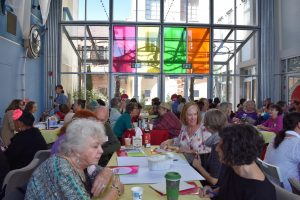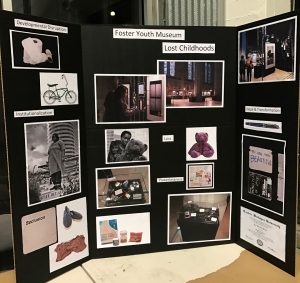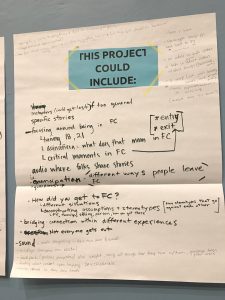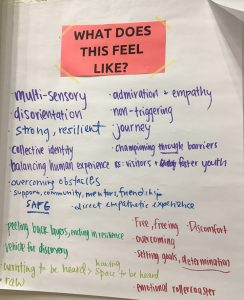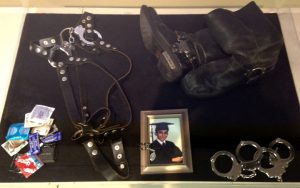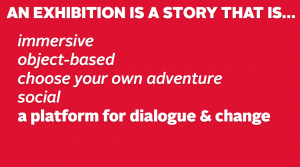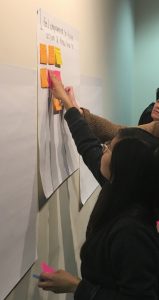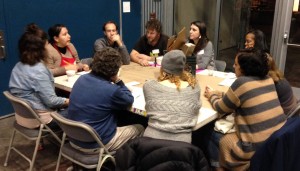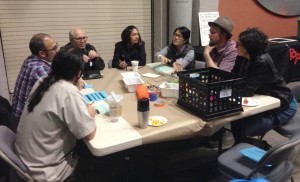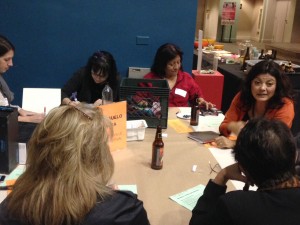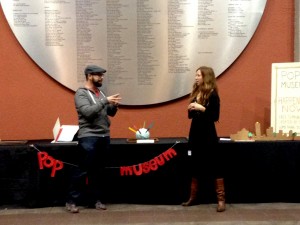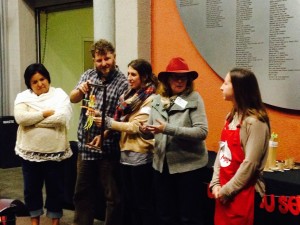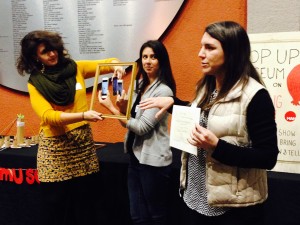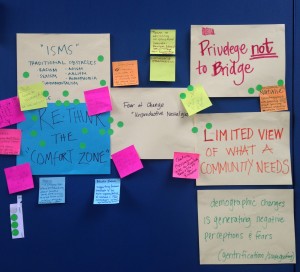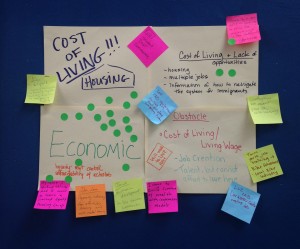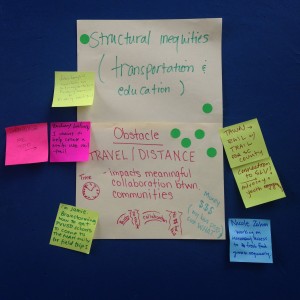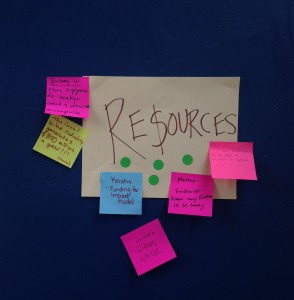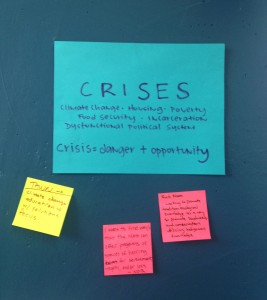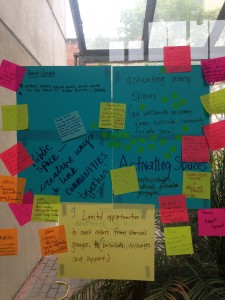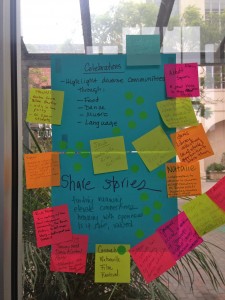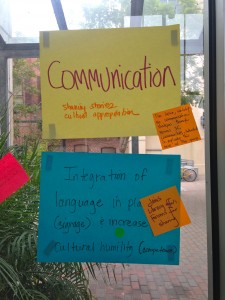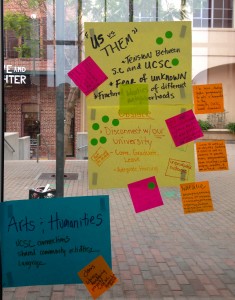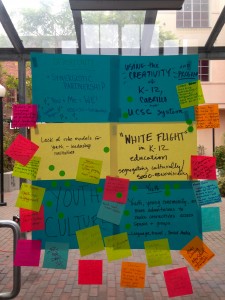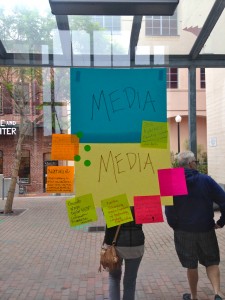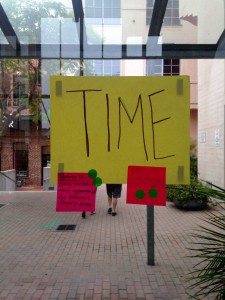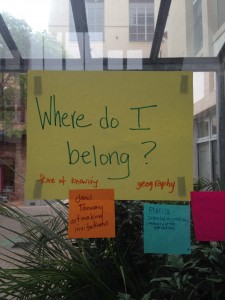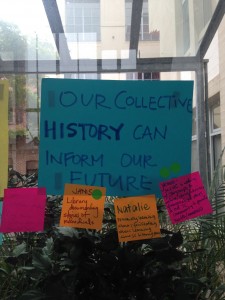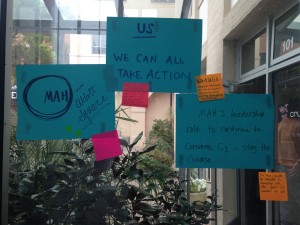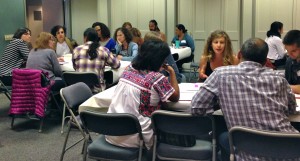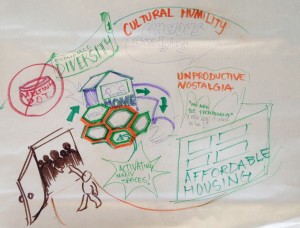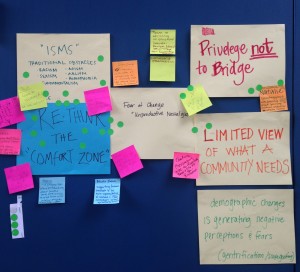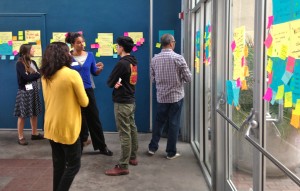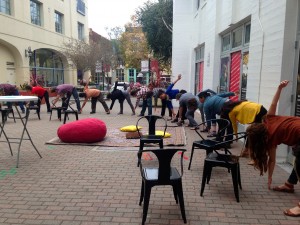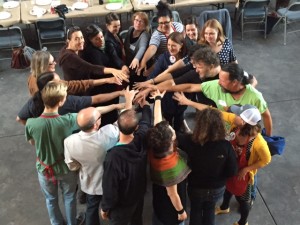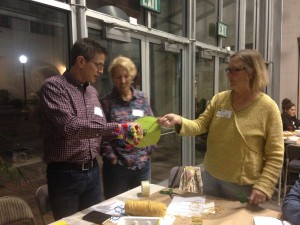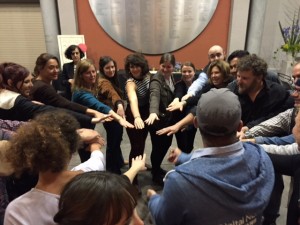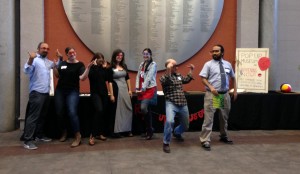 C3: Meeting 5 Geography and Diversity
C3: Meeting 5 Geography and Diversity
Tuesday May 5 2015 6-8PM
This meeting’s topic resonated strongly with us given the current events and the decades of oppression, exclusion and marginalization that continue to persist in our society. Geography & place are intricately intertwined with diversity & culture in our country and specifically in our county. At this meeting our C3 “sparks” shared their current work in creating spaces that are striving to be inclusive of many different kinds of people. Their work is already making space in Santa Cruz to build trust, understanding, empathy and communication across differences. At this meeting sparks shared their work and together we built a dream for a more inclusive future. 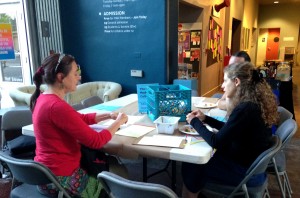
We kicked off the meeting with a geography exercise that encouraged participants to talk with their “neighbors” to physically situate themselves by where they lived in Santa Cruz County. We then asked participants to organize themselves by where they were born. Lastly, we asked members to place themselves by their family’s place of origin. People migrated across the atrium noticing differences and finding commonalities, particularly in that we were, at one point, all immigrants to Santa Cruz.
Sparks led short 5 minute presentations on their project and their dream for its future. Then, all members chose which project they would like to strengthen based on the interests and assets each individual could bring to the discussion. These were the groups:
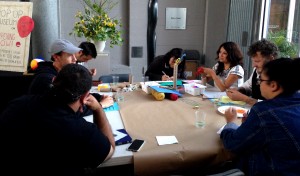 FoodWhat with Doron Comerchero
FoodWhat with Doron Comerchero
FoodWhat is a youth empowerment and food justice organization using food and sustainable agriculture as the vehicle for teens countywide to grow and cultivate their power and resiliency. FoodWhat partners with low-income and struggling youth to grow, cook, eat, and distribute healthy sustainably raised food which leads to profound transformation and for youth to experience their own success. As FoodWhat has grown to serve young people countywide, we are seeking input and connections on our community-based approach to expansion in Watsonville. To get a visual on a day at FoodWhat, you can check out our photo stories here.
The Iceberg Model of Culture with Silvia Austerlic
Silvia will lead a discussion on Geography and Diversity making a critical distinction between the perspectives of the Global North and the Global South, and the need for innovative approaches to address current problems in ways that meet the needs, give voice, and activate the potential of all people. She will introduce what she calls portals to new ways of thinking, two intercultural visual thinking tools she developed and used personally and professionally to learn, heal and transform cultural identity (with focus on dignity of the whole self) and intercultural relationships (with focus on respect and appreciation for differences, and relationship of service). Using the iceberg model of culture, you’ll be invited to bring your project, program or organization to the table.We’ll brainstorm together how you could use these tools to bring forth deeper cultural awareness, sensitivity and wholeness in your life, work or organization.
Latino Engagement with Sandino Gomez
The Museum of Art and History strives to be a welcoming and inclusive space for all residents of Santa Cruz County to build a stronger, more connected community. In our county, 33% of residents identify as Hispanic/Latino. We developed a Latino Engagement Plan this year focused on engaging, collaborating and learning from our local Latino community. Our long term dream is for the MAH to be an inviting space for Latino residents, the percentage of Latino visitors matches the percentage of Latinos living in the City (19%), and MAH staff deepen their own cultural competency which informs MAH programs.
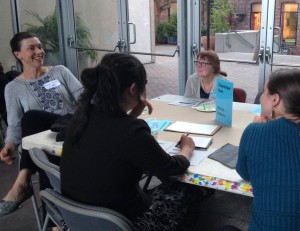 Chanticleer Park with Mariah Roberts
Chanticleer Park with Mariah Roberts
Learn about the history and future of Chanticleer Park, a 4.5 acre public space in the Heart of unincorporated Live Oak that County Supervisor John Leopold calls, “the County’s first DIY Park.” In a community full of barriers, ranging from socio-economic to organizational, this project exemplifies how community barriers can demand and foster creativity. See how neighbors have built and maintained an open and heavily used County Park, despite the County losing funds for the needed park during the 2011 fiscal crisis. How have the barriers of diverse socio-economics, historically non-existent urban planning, lack of County resources and dense population formed a unique Park, full of kids, dogs, art and bikes?
As Chanticleer Park enters a new phase; we invite you to be involved. We are launching an effort to build the County’s first Universally Designed playground at the Chanticleer site. What will it look like? Who will be involved? How can the process of designing and building a Playground-For-All offer an opportunity for a community to strengthen? How can our process invite participation for this next phase? Learn about Chanticleer Park Neighbor/Vecinos, Universal Design as an approach and specifically our community partner for the playground portion of the project.
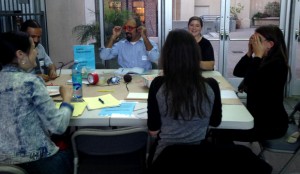 Members brainstormed ideas to strengthen the dream and then each group built an artifact of the future for the Pop Up Museum that represented the dream out of cardboard, paper, pipe cleaners, tape and markers. Objects and their labels were presented to the whole group and can be viewed here.
Members brainstormed ideas to strengthen the dream and then each group built an artifact of the future for the Pop Up Museum that represented the dream out of cardboard, paper, pipe cleaners, tape and markers. Objects and their labels were presented to the whole group and can be viewed here.
At the end of the meeting each individual either made a commitment to strengthening this work or shared a commitment they had already followed through on. Throughout this year and particularly with these projects presented, we have seen how important collaboration is in bridging across difference, place, people and cultures.
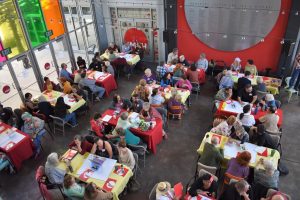 What has 88 smiles, 38 tears, 540 great ideas and a building full of hope and inspiration?
What has 88 smiles, 38 tears, 540 great ideas and a building full of hope and inspiration?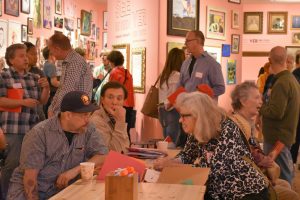 because of being a senior.
because of being a senior.